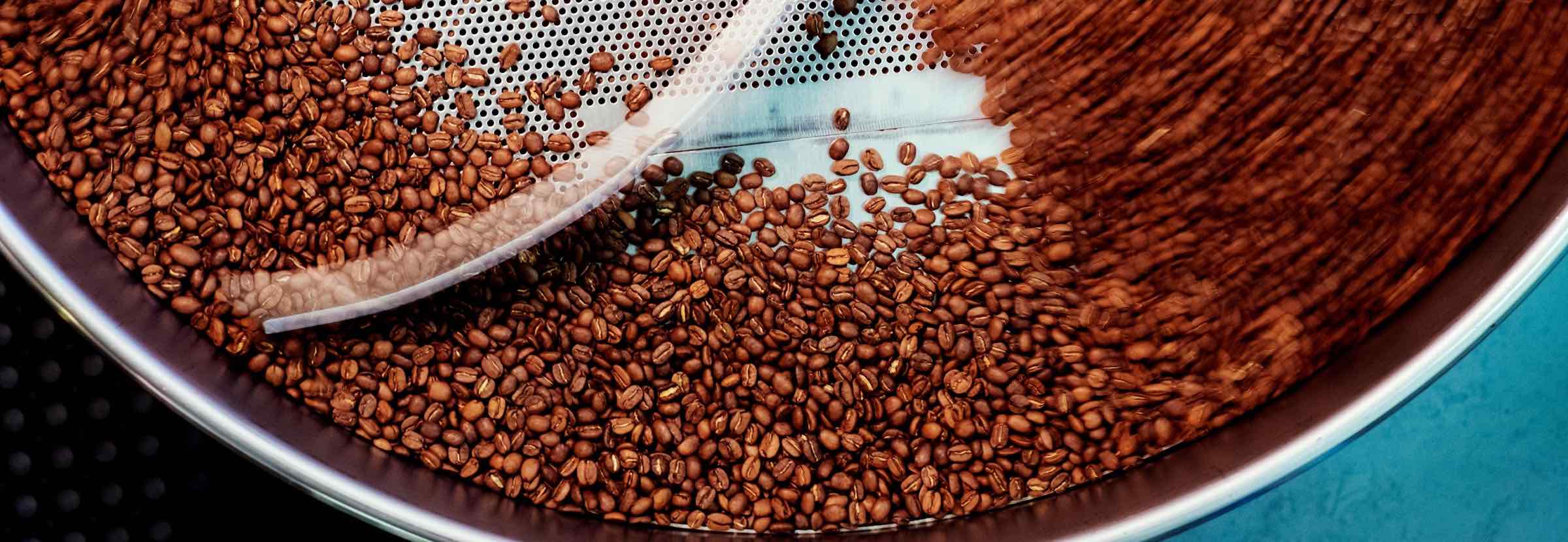How can roasters sell coffee to grocery stores and supermarkets?
Many roasters work with wholesale clients – including coffee shops and other businesses which serve coffee – for a number of reasons. But one of the most overlooked roaster-customer relationships is grocery stores and supermarkets.
In the specialty coffee industry in particular, selling coffee in grocery stores and other retailers can often come with negative connotations. Large-scale supermarket distribution networks can certainly impact coffee freshness, and thereby quality. But there are also many advantages to selling coffee in stores.
For instance, in the US alone, it’s estimated up to 67% of consumers buy coffee from supermarkets, while only 14% of people buy beans online. An even smaller 9% of consumers purchase coffee directly from roasters and coffee shops.
In short, by ignoring grocery and retail distribution, many specialty coffee roasters are potentially missing out on one of the most effective ways to generate revenue.
Rob Bathe is the founder and owner of Folly Coffee in St. Louis Park, Minnesota. Folly is a wholesale roaster founded in 2018 that sells to cafés, restaurants, grocery stores, retailers, and more.
In this article, he breaks down how roasters can successfully sell wholesale coffee to supermarkets and retailers.
You may also like our article on how roasters can attract new wholesale customers.
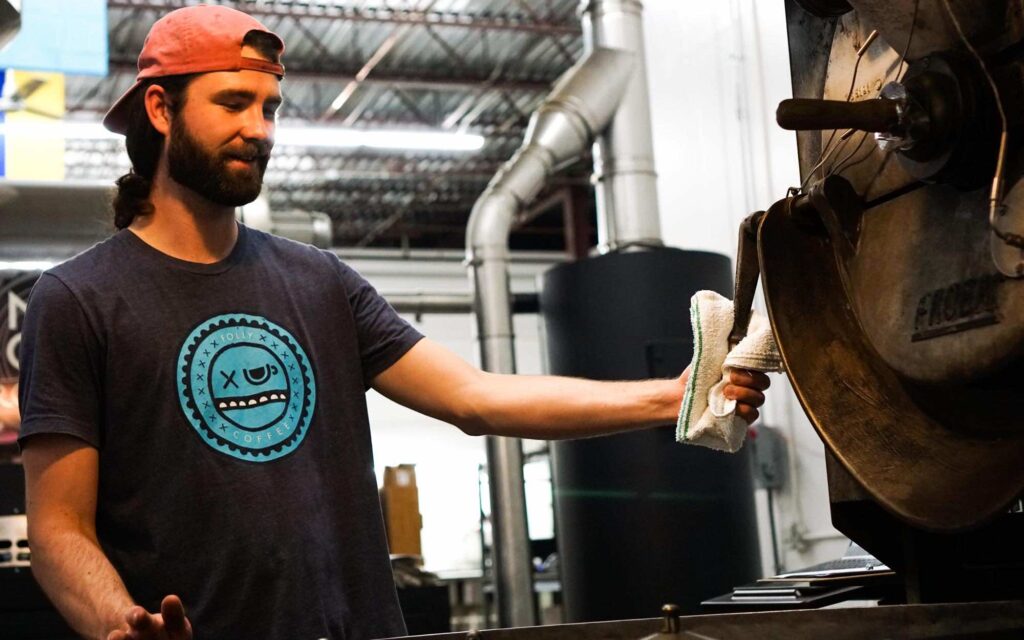
Why should roasters sell to supermarkets?
Many coffee professionals agree that larger-scale supermarket and grocery store distribution channels don’t exactly help maintain coffee freshness and quality.
We can define the “physical freshness” of coffee by measuring how much carbon dioxide (CO2) it contains. Essentially, the more CO2 there is in coffee, the more “fresh” it is. This is because during the roasting process, a number of gases (including CO2) form inside coffee beans.
Over time, the CO2 trapped inside the beans slowly starts to diffuse from the beans – a process known as degassing.
Depending on their distribution channels, it can take up to several weeks for products to reach shelves in larger grocery stores and supermarkets – compared to smaller shipments that roasters and coffee shops receive. Ultimately, this means that coffee products sold in grocery retailers are unlikely to be as fresh as possible.
For most grocery stores, empty shelves means lost sales, revenue, and profitability. While a specialty coffee roaster may prioritise selling fresher coffee (and will therefore potentially have lower stock levels), a supermarket will prioritise ample back stock.
Inevitably, this will lead to selling less fresh coffee through inventory on hand, which means these wholesale clients will need more frequent deliveries. This can be especially frustrating for roasters as the supplier is often responsible for covering costs when a product becomes “out of date”.
In the case of coffee, this would be around three to six months after its roasting date. This is because most of the flavours have degraded at this point. In turn, selling retail coffee at wholesale prices can lead to thinner margins compared to direct-to-consumer or coffee shop sales.
Weighing up the pros and cons
That’s not to say, however, there aren’t upsides to selling your coffee in supermarkets.
Specialty coffee roasters can still have an advantage over their competitors. All coffee products on retail shelves are subject to the same environmental conditions. In theory, this means fresher coffee will always taste better. In most cases, products sold by larger regional and national brands will be much longer past the roast date because of longer transit times and larger warehouse and back stock inventories.
More importantly, selling coffee in grocery retailers increases visibility of your brand and introduces your products to a wider range of people. In some cases, partnering with high-quality supermarket brands can even elevate your brand and business.
And if you have the capacity for it, there is also potential to significantly increase product sales through effective in-store strategies.
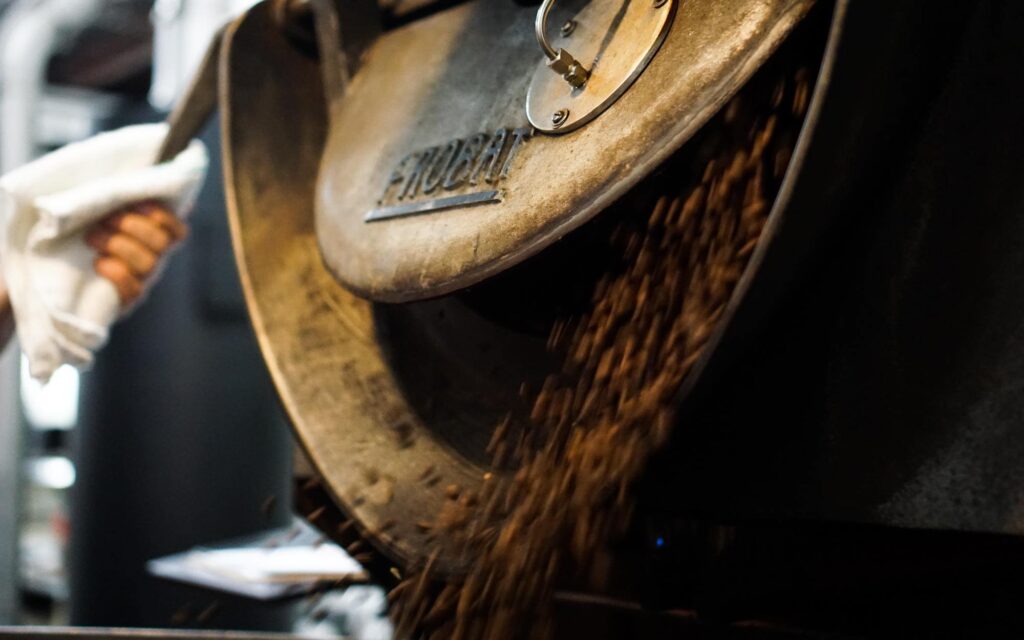
Types of wholesale distribution models
There are two main distribution models for selling coffee in grocery stores and supermarkets, and there are many factors roasters need to consider when deciding which one to use.
Self-distribution
When using this distribution model, roasters deliver coffee directly to stores. For the most part, the roaster is responsible for inventory management, product rotation, invoicing, and payment collection.
According to standard practices in the industry, once the coffee is delivered (along with the invoice), the buyer has 30 calendar days to pay for the product. This often shows as “net 30” on invoices.
There are several advantages and disadvantages to using self-distribution models. Although more labour and time is required, roasters can often improve their profit margins.
Furthermore, self-distribution is a great option for roasters who are new to selling to supermarkets and grocery stores. This model allows you to determine your wholesale roasting capacity for a number of locations and regional areas. Roasters can also leverage using this distribution model to build stronger sales pitches to potential future wholesale partners.
This model is also an opportunity to learn more about each location and wholesale client, and build relationships with managers and buyers.
However, it’s important to keep in mind when each grocery retailer is available to receive deliveries, as this could change from store to store.
Partnering with a third-party distributor
When working with an independent distributor, roasters will deliver coffee to a warehouse or distribution centre. From here, the distributor is responsible for taking orders and delivering products to supermarkets and grocery stores.
The distributor sends a purchase order (also known as a PO) to the roaster which includes details of the order, such as the quantity of coffee needed and expected delivery date.
The roaster will then invoice the distributor. Compared to self-distribution, this helps to streamline the invoicing and payment processes. The distributor is also responsible for deliveries, inventory management, product rotation, and invoicing and payment collection from buyers – which can help roasters save time and labour, too.
Additionally, working with a third-party distributor provides more opportunities to expand sales and work with new wholesale clients in different regions and markets.
However, it’s important for roasters to remember that distributors don’t exclusively work with them. Your products will be a few of potentially thousands within the distributor’s portfolio, and they may have a different sales focus every month which isn’t geared towards your product.
In turn, roasters should set realistic goals and expectations before working with a distributor, and communicate these clearly with them.
Another crucial factor to consider is that roasters will have little control over inventory management at store level. Similar to grocery retailers, distributors also prioritise larger back stock over freshness – and the supplier is still responsible for the costs of out-of-date products.
In turn, it’s important that roasters work closely with distributors to balance both stock and coffee freshness, and make sure the end consumer receives a high-quality product.
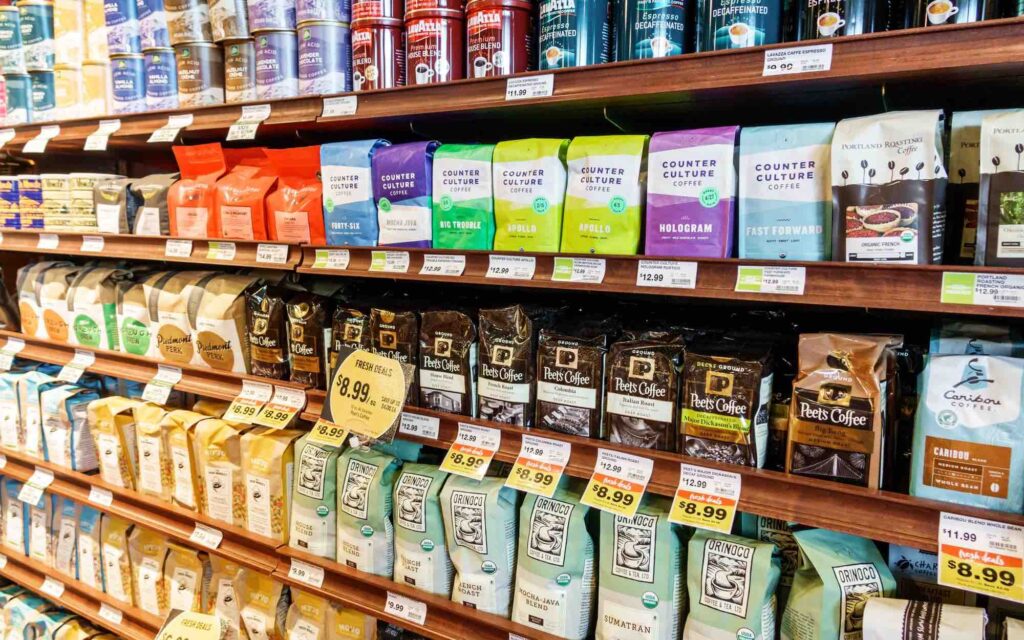
How should you price coffee in supermarkets?
Before approaching potential wholesale clients, creating an effective pricing strategy for grocery retailers is essential.
When determining wholesale prices, roasters should factor in margin requirements for both distributors and retailers. This will help to increase the chances of working with distributors and clients in the future.
Margin requirements for grocery stores and supermarkets can vary, but they generally fall in the range of 30% to 40%. Distributors, meanwhile, have more variable margin requirements, so there is more room to negotiate depending on the volume of your product sales. In general, most distributors have a 15% to 25% margin requirement, but it’s better to assume a larger margin requirement when setting your prices.
Discounts and promotions can be a crucial part of successful partnerships with grocery retailers. Some supermarkets will split the total discount value with the roaster, but in other cases, the roaster may have to cover the full cost of the discount.
In line with this, it’s important to not set wholesale prices at the lowest possible amount. This will provide you with little to no room to apply discounts and promotions to your products, while still maintaining your overall needed margins.
Remaining competitive
To stand out against other brands, you will need to price your products competitively. It is recommended to price match – or at least be within US $1 – of the highest-priced coffee available in store.
If you decide to charge more than the highest-priced coffee, you also need to set an aggressive sales and promotion schedule to drive consumer interest. Ultimately, price is one of several indicators of quality to the customer. By selling your coffee at the same or similar price to the most expensive coffee, it tells the consumer that your product is one of the best available.
Trying to out-price your competitors isn’t a sustainable strategy in the long term, however. Larger brands with higher sales volumes will always have the resources and capacity to undercut prices if they need to.

Developing an in-store strategy
Once you have partnered with a grocery store or supermarket and your coffees are on the shelves, there is still more work to be done.
Some important factors to consider in the long term are:
Shelf placement
- Having your products at eye level will significantly increase sales, especially when compared to placement on the bottom shelves
- Is your coffee sold in the same section as similarly-priced coffees? This will help to easily indicate the quality of the product to consumers
Number of stock-keeping units (SKUs)
- How many types of coffee is the retailer willing to buy? Three or more is necessary to create a billboarding effect with your brand. This term refers to increased visibility on shelves due to multiple facings
- If the retailer only wants to buy one or two SKUs, are they willing to double or triple the number of facings to create a similar billboarding effect? “Facings” refers to the number of shelf spaces or slots dedicated to one brand
- Too many SKUs, however, will increase the chances of lower-selling coffees going out of date. To avoid this, it’s best practice to approach buyers with no more than five of your best selling coffees to start, with the option of expanding in the future based on sales volumes
Choosing displays
- End cap displays (placed at the end of an aisle) and stand-alone displays (can be placed anywhere in the store) in high-traffic areas help to increase sales significantly
- In some stores, managers can select where to place displays. In others, meanwhile, display spaces are mandated and will need to be confirmed with the buyer
- Many retailers charge fees for specialised displays, but increased sales can offset these costs
Samples
- Many buyers expect brands to offer in-store samples, and they can be an effective way to showcase the quality of your coffee
- Have a plan in place to organise sample tasting, as well as how often you will be able to offer samples
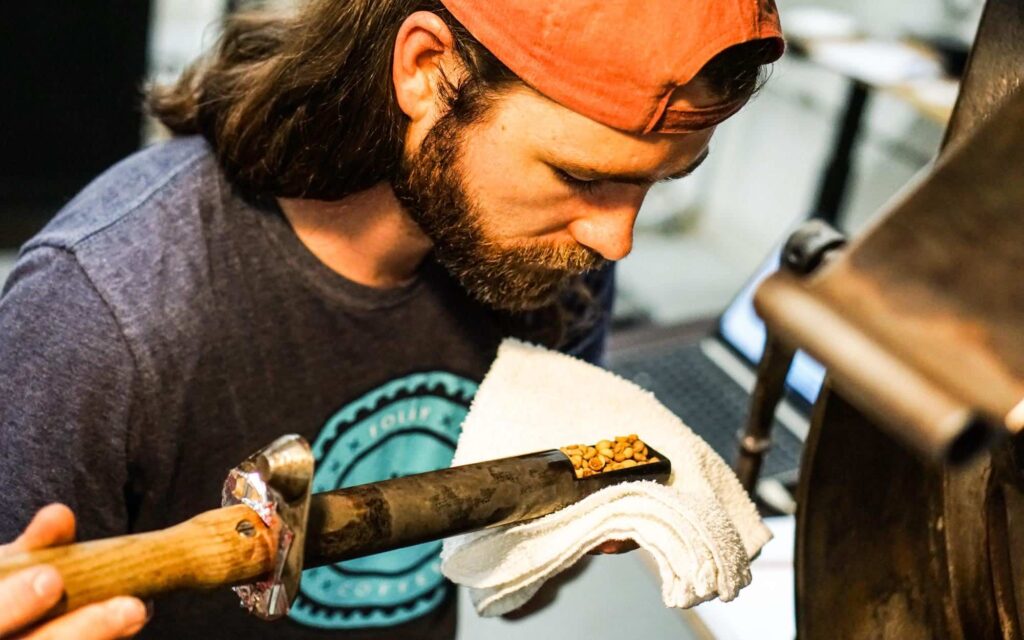
Choosing to work with a grocery store or supermarket is a huge decision for any roaster. In summary, it ultimately depends on your capacity to scale production and the level of risk you are willing to take.
But when carried out successfully, selling coffee in a grocery retailer can open your brand up to a much wider range of customers – and potentially help increase sales significantly.
Enjoyed this? Then read our article on how roasters can diversify their income.
Photo credits: Folly Coffee
Perfect Daily Grind
Want to read more articles like this? Sign up for our newsletter!

